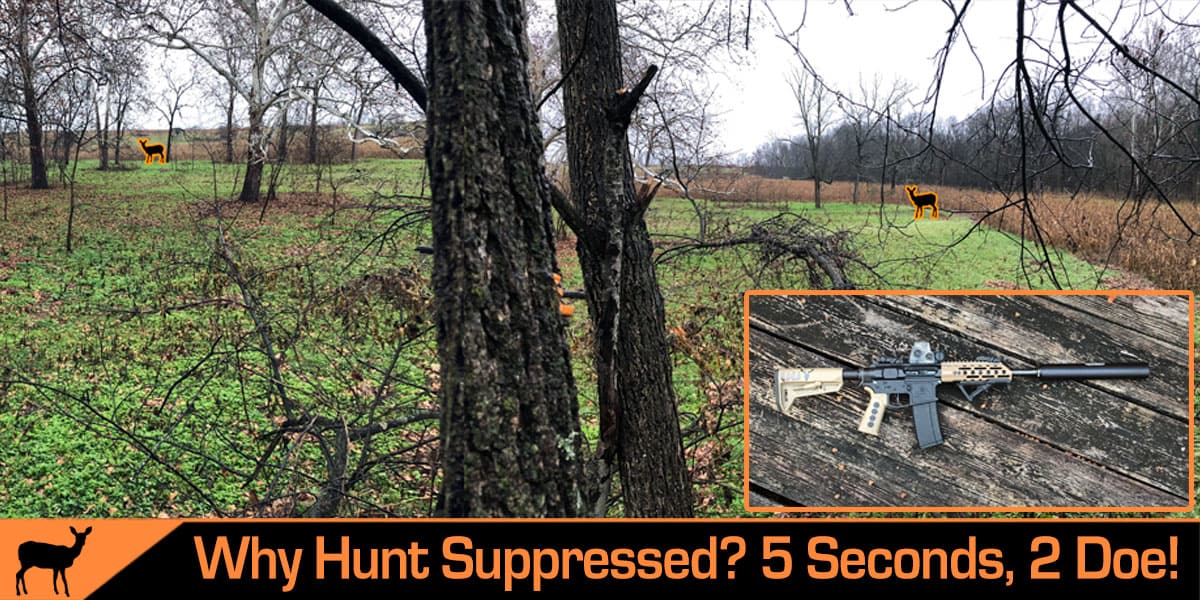 Behind every successful harvest there is a story. The story I’m referring to is not the drive to deer camp, the plane ride or listening to Johnny Cash by the fire the night before opening day. I’m referring to the months of planning, field study and choosing the most appropriate firearm system for success. One size does not fit all when deer hunting. The tactical approach to deer hunting is my passion, part of the SHWAT Life. For the past 11 years I’ve utilized multiple firearms for my Indiana deer hunt, many of which were built specifically for the area I would be hunting in. This past year was no different and my preparation produced the fastest two deer kills I’ve ever made. Two doe in 5 seconds! Was it just a fluke? No, the credit goes to a mix of skill, amazing equipment and a little luck.
Behind every successful harvest there is a story. The story I’m referring to is not the drive to deer camp, the plane ride or listening to Johnny Cash by the fire the night before opening day. I’m referring to the months of planning, field study and choosing the most appropriate firearm system for success. One size does not fit all when deer hunting. The tactical approach to deer hunting is my passion, part of the SHWAT Life. For the past 11 years I’ve utilized multiple firearms for my Indiana deer hunt, many of which were built specifically for the area I would be hunting in. This past year was no different and my preparation produced the fastest two deer kills I’ve ever made. Two doe in 5 seconds! Was it just a fluke? No, the credit goes to a mix of skill, amazing equipment and a little luck.
For years, my family has been very fortunate to hunt private farms in Shelbyville, Connersville and Brownsville, Indiana. Each property has its unique signature which dictates which firearms I take from Florida when I head up north. Over the past few years, I have taken long range and short range rifles. A majority were customized to the unique terrain of the specific property I’d be hunting. For example, my long range hunting rifle, an amazing Remington 700 custom build, is my go to rifle for sitting along corn and soybean fields stretching out over 300y. In contrast, for the heavily wooded areas I use one of my AR15 platforms. In 2018 it was my custom 458 SOCOM SBR. I’ve hunted with this setup before, but this year Bowers Group joined the fun via their VERS 458 Suppressor. There is nothing like the sweet BOOM of Silent Versatility.
The hunt started like many others, me sitting along the corn field of John’s farm seeking a distant target. Two years ago I recorded a 300 yard deer kill, my best ever. 300 yards is my new baseline and every year I challenge myself to take it out a little further. On opening day I saw more than ten deer, but they were all either on the wrong side of the fence or way too far for an ethical shot. By late morning on Sunday, the second day of firearm season, the deer were no longer using the fields as the gunfire spooked them into heavier cover. It was time to put the REM 700 away and take out the 458 SOCOM to play.
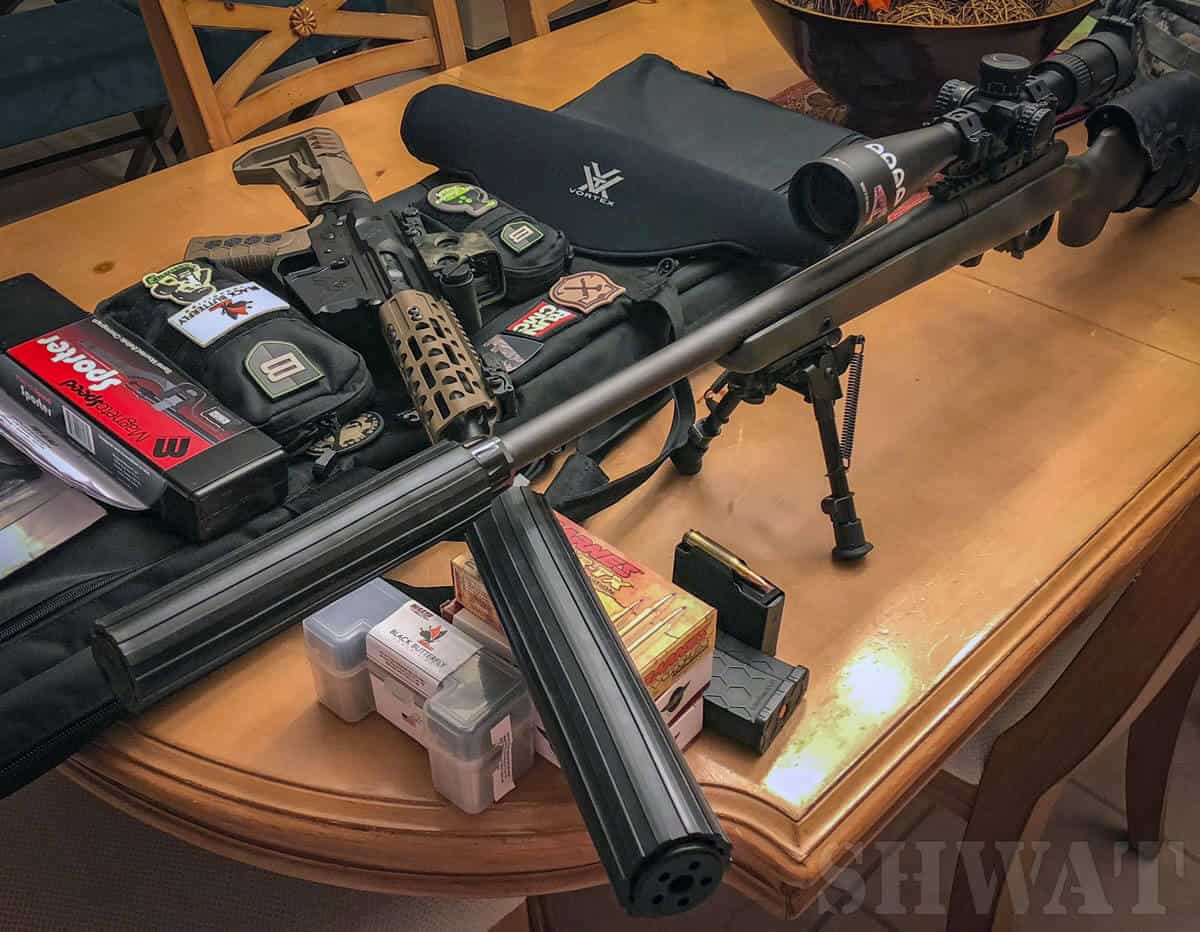
Time to switch up the kit. It pays to have options and be prepared for them.
An unexpected phone call from Dave, a local corn and pig farmer, changed our hunting venue for the Sunday afternoon hunt. Dave agreed to allow us to hunt his farm for a small fee, so we jumped at the opportunity. I’d not factored in Dave’s place, but I was familiar with the property’s layout. Now it’s simply a matter of adjusting my prep work for shots out to 200y. My 458 can easily produce effective kills at this range, but all my homework was based on shots within 75y. As a tactically trained hunter I’ve become accustomed to adapting to change quickly.
Upon arrival, Dave’s Farm presented some advantages, but it also presented some challenges. It appears that the Whitewater River, which runs in a horseshoe around his property, flooded much of his crops earlier in the year, destroying areas of soybean and corn. Yes, Dave grows both on his property every year, versus rotating the crop as most farmers do. To make matters worse, his corn was still up! Oh boy… Every mid-west hunter knows that once the deer are spooked they bed in the corn until dark, so seeing anything is now more luck than skill. Either way, we’re here and we’ll make the best of it.
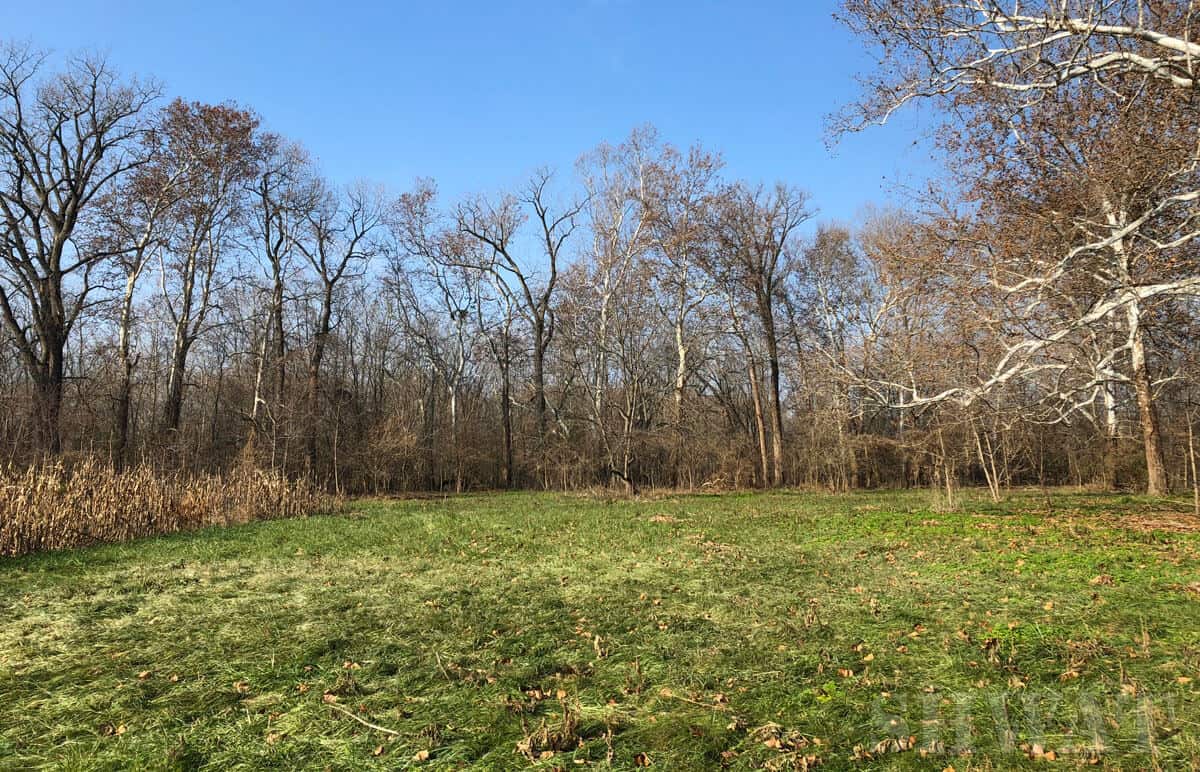
My deer stand as it would look to the doe. Right in the middle. Yep, hard to see, but I’ll show you a close up a little further down.
I elected to take the existing buddy stand that sits at the lower edge of the property. It faces west towards the woods and the river is just beyond it. The corn field was to my back. It formed an “L” shape which provided me a good shot anywhere from 50 to 175 yards. Also, Dave thankfully mowed all the underbrush so I could see the river bend approximately 250+y to my north. Last year the underbrush was over 4’ tall, so the deer moved in and out of the property without being noticed. Don’t get me wrong, that’s all great, but I did not plan on using a long range rifle on this property. The Remington 700 is simply too bulky for this setup, so I updated my ballistics table and recorded the 458 SOCOM hold over adjustments. My effective kill yardage was approximately 200y (1,152 ft/sec muzzle velocity/884 ft/lbs kinetic energy) with an 18 inch holdover, considering I zeroed the rifle at 50 yards.
Kelly, a close family friend, mentioned that the deer move late on this property, so we’re looking at a potential shot opportunity just before 6:00 PM. At 6:01 PM you literally can’t see your hand in front of your face. It was a mild afternoon with overcast skies and the wind was still. Overcast weather means that it’ll get dark earlier, so time was a luxury. Furthermore, there’s no wind to mask my scent or sound, so keeping still and moving slowly was critical. Imagine sitting still on a cold steel cheese grater for hours on end. LOL! The silver lining was the stand’s location. It was strapped to an old tree with a gnarly shape and branches sticking out in all directions. It was perfect cover!
Studying terrain with a topo map or Google Maps provides great insight into deer movement. Once you add in visible sign, such as fresh tracks, deer scat and rubs, the map starts to tell you a story. As I mentioned, the Whitewater River borders the property, so knowing where the deer cross will fill in the missing pieces. There are only a few ways deer will enter and exit the property, so my task was to make an educated guess.
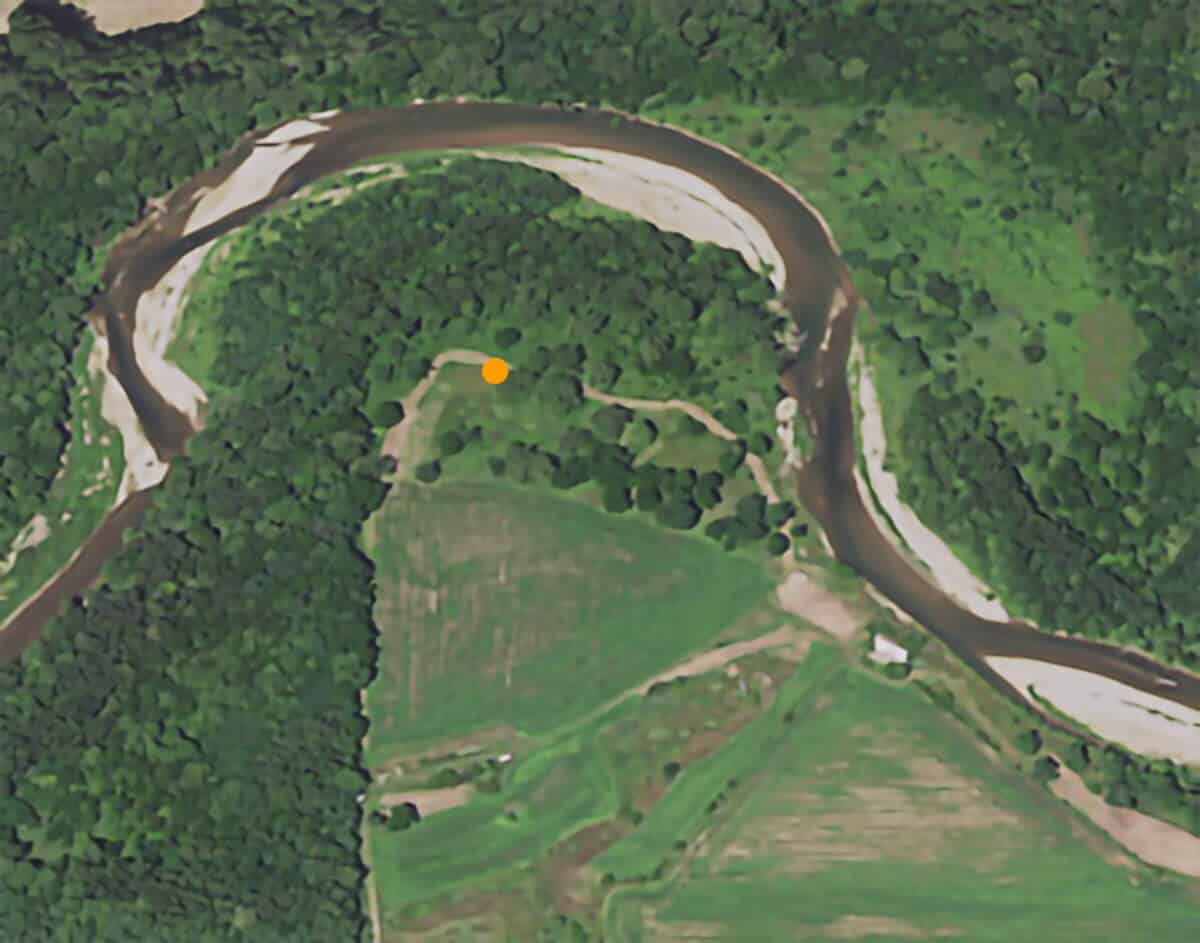 Kelly has hunted this property a few times and his brother’s son harvested a buck and doe from this stand during archery season, so there is no question I’m in a good spot. I was told that the deer use the sandbar behind me and the sandbar on the northeastern edge just in front of the old barn. The deer use the woods and corn as cover for their food run before going back to their bedding area just across the river on the far north piece of Dave’s property. If I were to draw arrows it would look like an oval. The direction of travel of this oval can go either way.
Kelly has hunted this property a few times and his brother’s son harvested a buck and doe from this stand during archery season, so there is no question I’m in a good spot. I was told that the deer use the sandbar behind me and the sandbar on the northeastern edge just in front of the old barn. The deer use the woods and corn as cover for their food run before going back to their bedding area just across the river on the far north piece of Dave’s property. If I were to draw arrows it would look like an oval. The direction of travel of this oval can go either way.
The first deer I sighted was just after 5PM. It was a small doe at the corn field’s edge 160 yards behind me. I swear I thought it was a dog at first! Kelly was right, the deer move late on this property. The young doe retreated into the corn a few minutes later. Tick tock… Not much time left in the day.
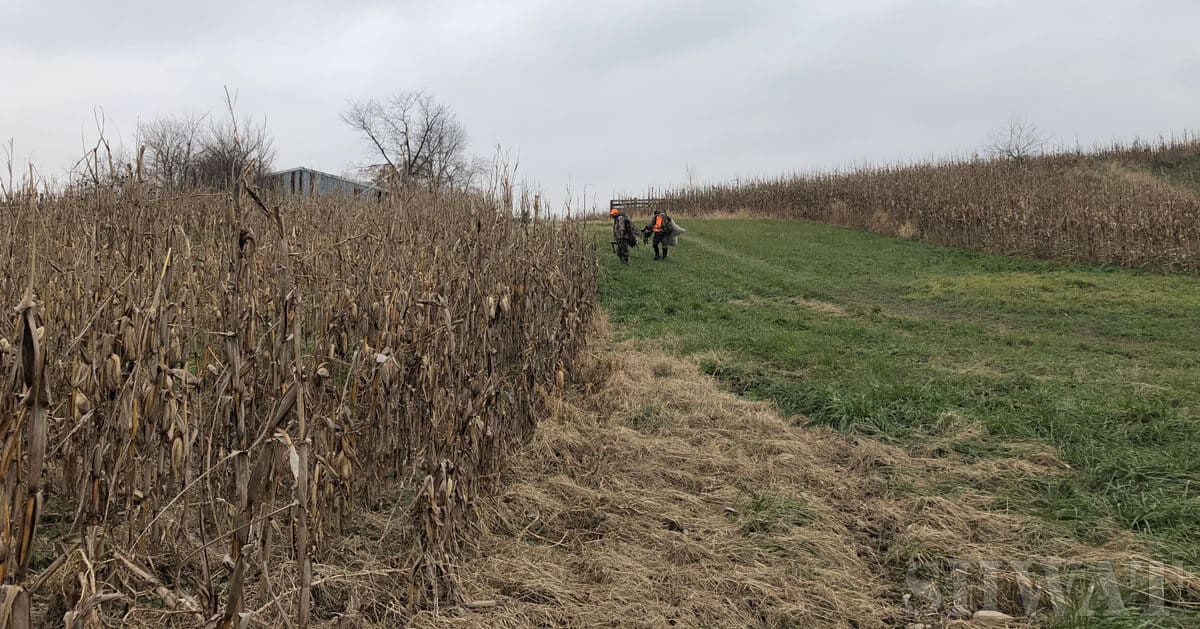
The corn was tall and thick!
The woods started to go dark and my ability to see through the shadows was decreasing by the minute. At this point, my ears had to do the work. Just after 5:30 PM I heard a random rustle of leaves behind me. I looked over my right shoulder and there she was. I slowly sat up, turned around and steadied my rifle against the tree. She could hear me, but she looked more curious than threatened. Her tail was down without a worry.
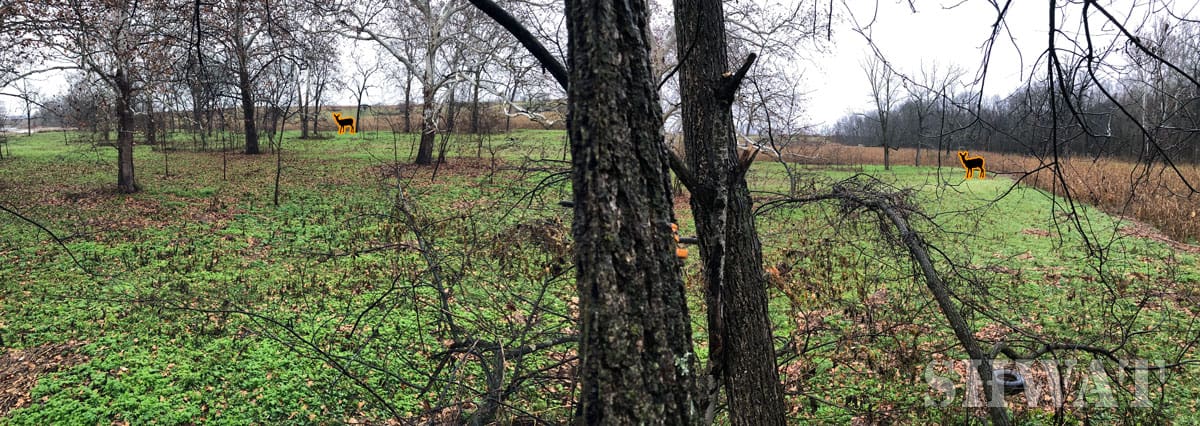
Left side Doe #1, Right side Doe #2.
I confirmed my range of 68y and felt confident with the shot. The Black Butterfly 300g “TREX” Makers Black Flat Tip bullet hit its mark just high of where I’d intended, severing the spine and dropping the doe where she stood. As I took my eyes off the optic, my peripheral vision saw another doe 50y to her right, approximately 70 yards away. I quickly shifted to the other side of the tree, steadied my rifle and sent another round. The second deer was facing me, tail down with the same curious face as the first doe. The bullet hit exactly where my red dot was pointed, quietly slamming into her chest. At first I thought I’d missed. She moved quickly to the corn field and I fired two more shots at her. The additional shots didn’t hit their mark, but hearing her crash in the corn told me the first shot crushed the vitals.
As you would imagine, adrenaline was kicking in. I could feel my heart virtually pounding out of my chest. I just harvested two nice sized doe in 5 seconds!
It was getting dark fast as I ran over to the second doe. She didn’t get far, only 15 yards away from where she stood when I shot. I called Kelly and my dad on my UNIDEN Walkie Talkie to share the great news. As they gathered their gear I turned on my headlamp and got to work field dressing both deer in the dark. What a day!
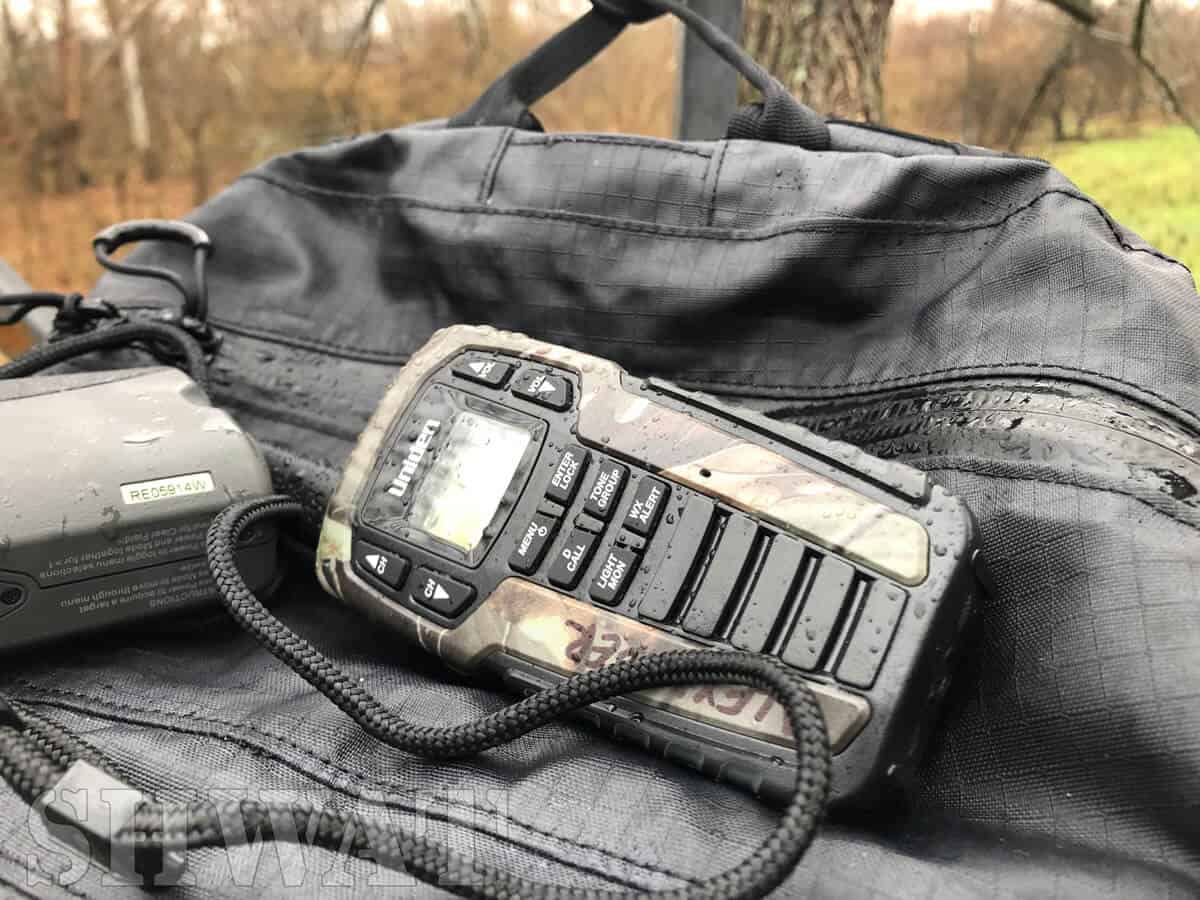 The second full day of hunting is in the books. On the way back to Kelly’s place and a hot meal, I made a point to reflect on all the pieces of the puzzle which made this hunt successful. I knew this would make a great story.
The second full day of hunting is in the books. On the way back to Kelly’s place and a hot meal, I made a point to reflect on all the pieces of the puzzle which made this hunt successful. I knew this would make a great story.
First and foremost, I’m just a regular guy who is passionate about the tactical approach to deer hunting. I‘ve participated in tactical firearm training, but a majority of my decisions are based on field experience. My approach is not special, it’s just methodical. Planning, field study and the choice of the most appropriate firearm system will drive success. The question is, how did this explain two effective shots in only 5 seconds? Let’s break this down into several pieces and it’ll all come together in the end.
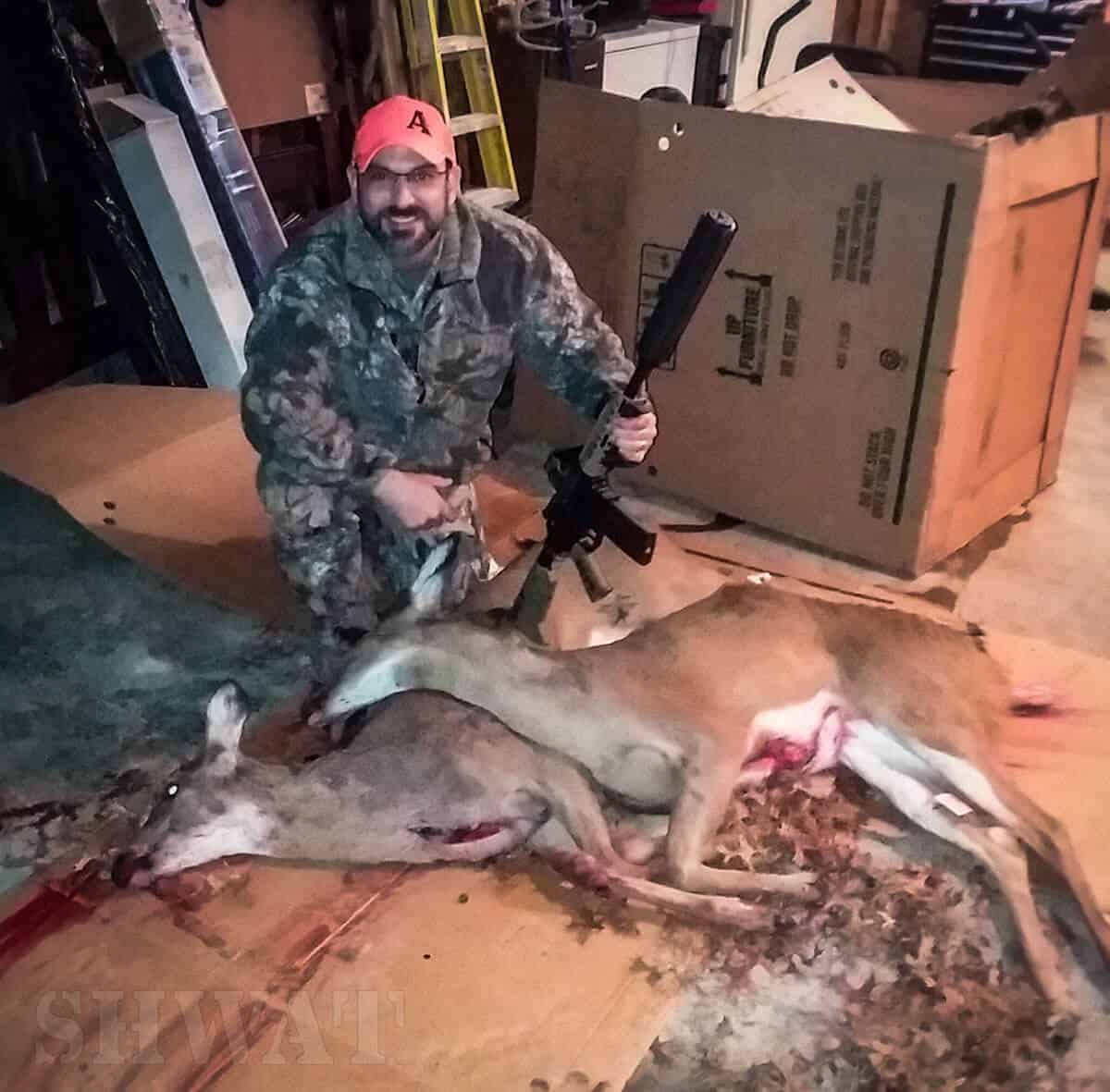
Looks to me like effective suppressors make better things possible for us!
Tactics
Let’s recall basic deer biology. Deer are color blind, so breaking up your silhouette is priority. Fortunately, the buddy stand location provided the perfect cover. The gnarly shaped tree and its abstract pattern of the branches concealed my movement as I shifted position to take my shots. Tree trunks and branches are amazing gun rests, so use them if you’ve got them!
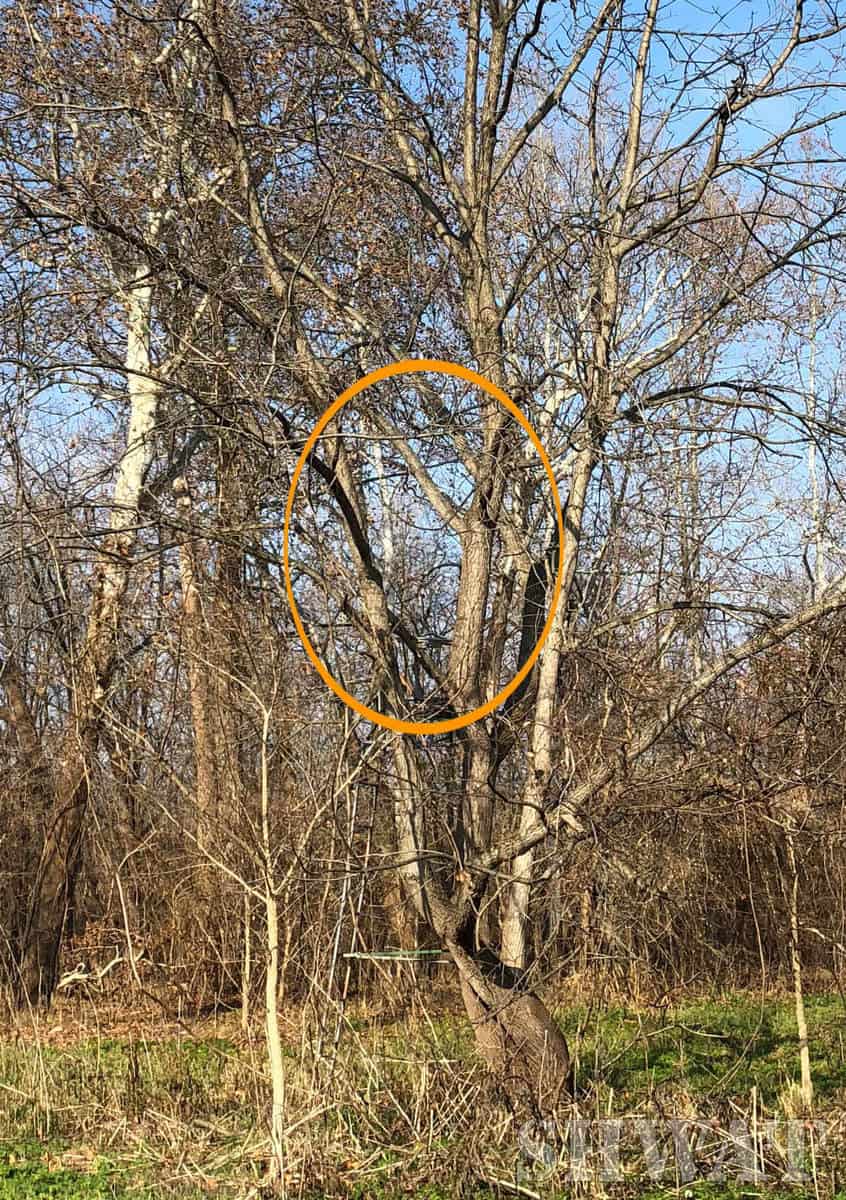
This was my perch on the Buddy Stand
The Rifle
The heart and soul of the firearm is its trigger. My ability to manipulate it the same way every time will drive my success or failure when in the field. Firearm training will often involve trigger practice via dry fire exercises and overall time behind the trigger. I have a great relationship with CMC Triggers and their triggers can be found in my entire hunting AR15 collection. You’ll even find one of their specialized Glock Triggers in my Glock 43, my every day carry. Without question, years of practice with their single stage 3.5lb flat trigger has made me more successful on the hunt. It’s an ultra-crisp trigger with a positive reset, providing me the ability to make fast initial and follow up shots. The proof is definitely in the pudding.
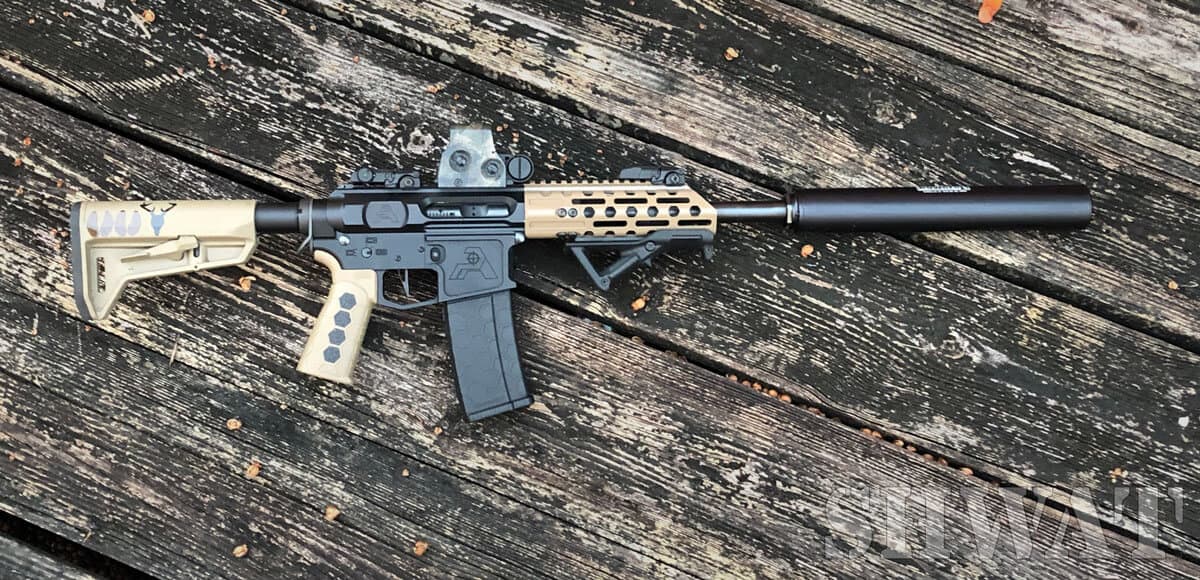 Once the trigger is squeezed, the rifle system’s recoil management takes over. It’s a mix of moving and fixed parts. The Sprinco Spring and Kynshot Hydraulic Recoil Buffer help mitigate the gas due to the high pressure created in the suppressor.
Once the trigger is squeezed, the rifle system’s recoil management takes over. It’s a mix of moving and fixed parts. The Sprinco Spring and Kynshot Hydraulic Recoil Buffer help mitigate the gas due to the high pressure created in the suppressor.
The Bowers VERS 458 Suppressor
The suppressor by definition offsets felt recoil with its added weight and ability to harness the energy produced by the cartridge. I was fortunate to have Bowers Group as a partner; their VERS 458 is well known in the industry for being one of the best and quietest suppressors available for the 458 platform.
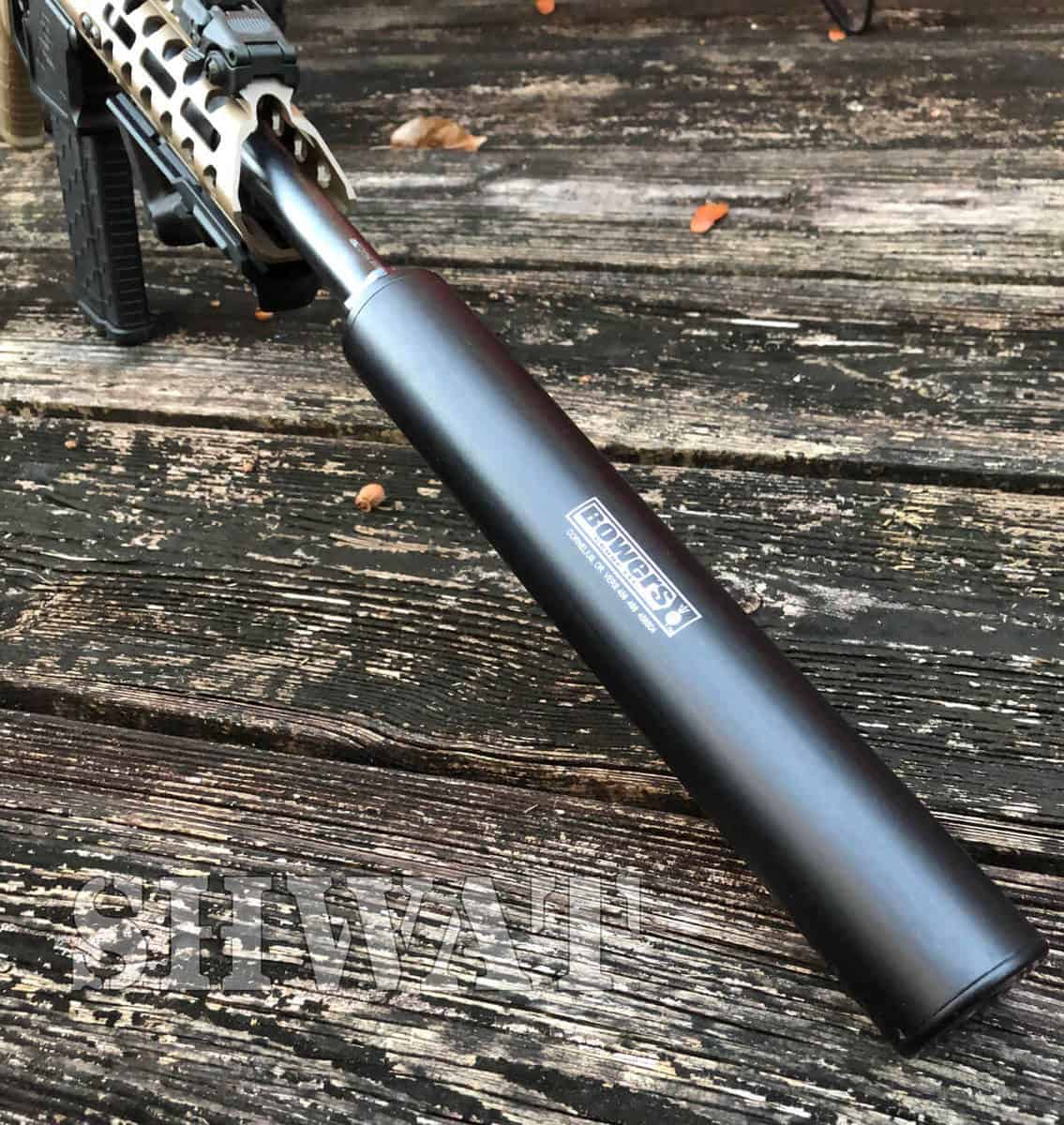
Doubt I’ll ever hunt unsuppressed again! Why would I?
As you would imagine, the muzzle blast from a 458 SOCOM, especially in a SBR setup will shake the leaves off the trees. Seriously speaking, the blast with a muzzle brake easily measures into the 160+db range which can cause permanent hearing damage without the proper hearing protection. The Bowers VERS 458 is simply magic, providing approximately 30db of sound suppression. Once you add in hearing protection you’re in the safe zone! The suppressor weighs in at 23oz and adds 11.25” of length to the rifle system. This length is easy to manipulate in the stand or in a climber. In my case, the 10.5” barrel plus the suppressor is just less than 22”. It’s literally a suppressed hunting cannon!
Black Butterfly 458 SOCOM Ammo
Now that I’ve taken the shot, it’s up to the ammo to produce the required velocity and kinetic energy to produce an ethical kill. Black Butterfly Ammunition has been a critical part of my wild boar hunting success in Florida, so I naturally reached out to them for deer hunting ideas. The major difference with this hunt is the addition of the suppressor. I don’t need a heavy bullet for deer, I need a “Goldilocks” cartridge, a perfect mix of velocity and mass which will work well with the short barrel, suppressor and still provide me the kinetic energy needed on impact. The answer was the 300g “TREX”, Maker-Black Flat Tip Cartridge. This bad boy generates a muzzle velocity 1,708 ft/sec with 1,943 ft/lbs of kinetic energy at the muzzle. Due to the planned short range use, I zeroed the rifle at 50y and the ballistics puts me within 5” at 137 yards with a velocity of 1,291ft/sec and kinetic energy of 1,106ft/lbs. HECK YES!
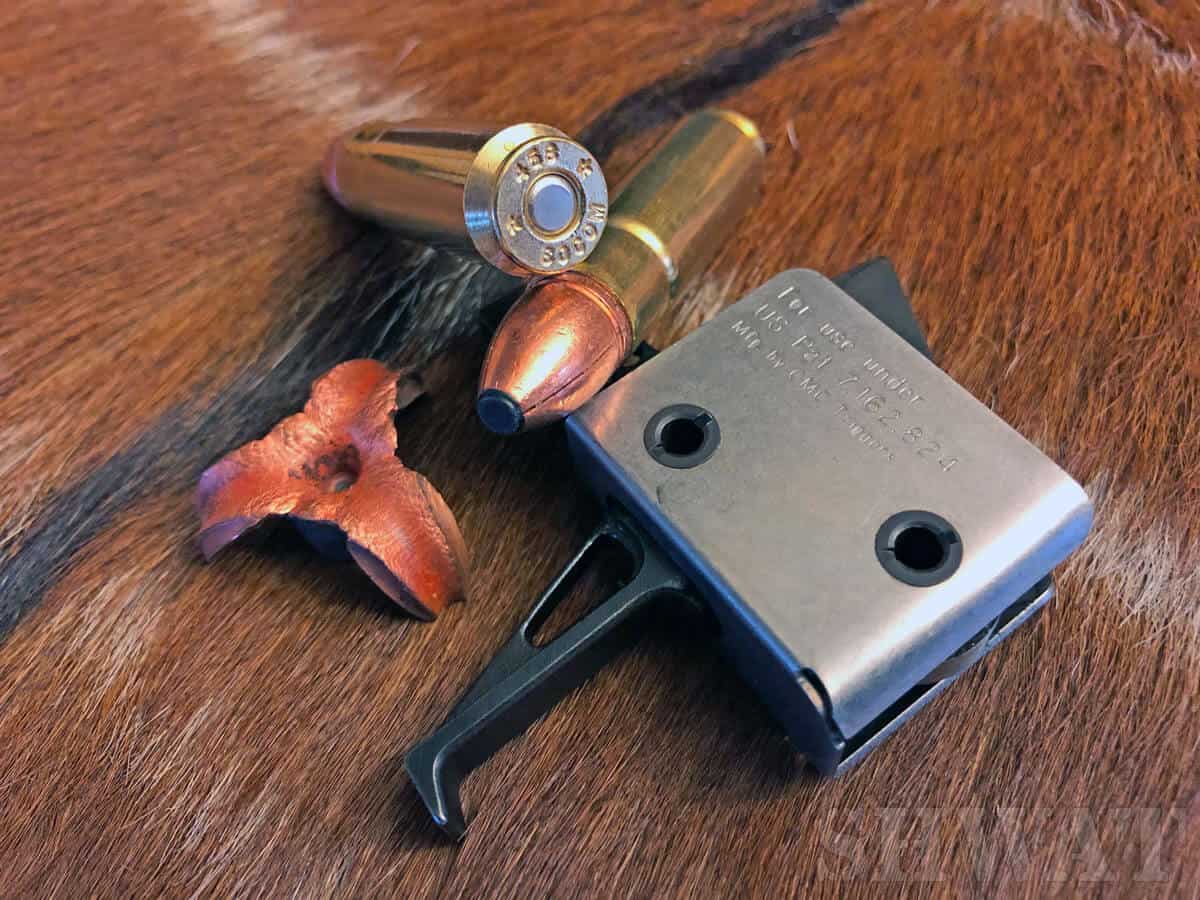
My beautiful Black Butterfly ammo and CMC trigger
Ok, now you know all the pieces to the puzzle, but how did it all play out? The gnarled tree and random direction of branches provided me the perfect cover and stability. The first shot hit the doe a little high, severing the spine, dropping her where she stood. The second doe was just 50y away and she did not translate what she saw or heard as an immediate threat. Crazy! The Bowers VERS 458 worked so well that the second deer simply stood there with her tail down looking in my general direction. I’m certain she would have bolted at the first shot had I not been running this suppressor. That would have left this story and its memories a lot closer to normal instead of “You’ve got to be kidding” great. The metaphorical final nail in the coffin was the Black Butterfly 300g “TREX” bullet. It provided the knock down power needed to effectively silence the first doe, allowing me the shot at the second. My years of training and practice with the CMC Triggers 3.5lb Single Stage Trigger paid off. What are the chances of me replaying these exact events in fewer than 5 seconds? NONE! This was a once in a lifetime event!

